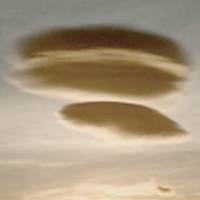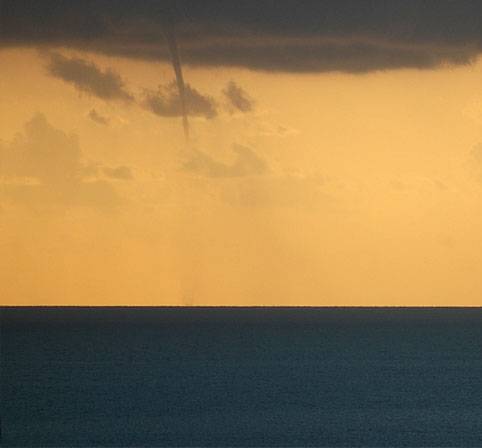
| THE HANDSTAND | DECEMBER 2005 |

Shirana Shahbazi (on the left, here with two
volonteers)
working at her wall painting for PRAGUE BIENNALE 2,
Karlin Hall, Prague 2005

Before the big show, Karlin Hall, Prague 2005
IT ALL HAPPENS IN PRAGUE
Political art in Latin America and painting drive the program of Prague Biennale 2
Just a few years ago, Prague may have seemed an unlikely place to hold a biennial of international contemporary art, but the first Prague Biennale, which took place in 2003, brought artists, curators and critics to the city in droves. The second edition, again organized by Flash Art publisher Giancarlo Politi and editor Helena Kontova, begins on May 26/27/28 and runs through September 15. One major change this time around is the new venue, Karlin Hall, a spacious post-industral building adapted expressly for the exhibition. With its dual focus on painting and on art as political action, the Biennale comes with a host of themed exhibitions organized by a diverse group of curators. The members of the curatorial team behind “Expanded Painting” - headed up by Politi and Kontova - are, Andrea Bellini, Patricia Ellis, Power Ekroth, Jacob Fabricius, Anda Klavina, Pablo Lafuente, Francesco Manacorda, Chus Martinez, Neil Mulholland and Eva Wittocx. The curators are bringing together work by over 100 artists, illustrating the relationship between painting and other mediums such as photography and video. Today painting can be called an expanded field not only in terms of how the medium interacts with other mediums, but also in terms of its geographical breadth. Intriguing new painters hail from cities the world over, but two points of greatest interest recently have been the former East Germany and China. At the Prague Biennale 2, Johannes Schmidt curates “New German Painting - The Leipzig and Dresden ‘schools,’” featuring more than 20 artists from the new generation of German painters. Milan-based gallerist Primo Marella and Francesca Jordan present “CHINA - New Perspectives in Chinese Painting.” Curator Luca Beatrice lends a historical (and locally relevant) angle with a show dedicated to the Normal Group, founded in the 1980s by Czech painters Milan Kunc and Jan Knap with the German Peter Angermann. There will also be a tribute to the Italian painter Gian Marco Montesano. Besides painting, the Biennale’s other major focus is the relationship between art production and political action in Latin America. “Acción Directa,” curated by Marco Scotini, presents interventions and political actions by artists and “dissidents” from countries including Peru, Bolivia, Colombia and Nicaragua. Hanna Wróblewska and Anna Jagiello take an in-depth look at the current Polish art scene in “Poland Overview” and Jirí David and Juraj Carný bring the Prague Biennale closer to home with the Czech and Slovak sections. Other exhibitions filling out the Biennale’s packed roster are “Definition of Everyday” curated by Vit Havránek, Karel Císar and Jan Mancuška; “Street Art,” a project by Christian Schmidt-Rasmussen; “Playstation,” which includes Eric Doeringer’s “bootlegs” of well-known artists’ works; “Outsider Art,” a gathering of British aritsts curated by James Colman; and “Kinetic Art,” a historical show curated by Getulio Alviani.
The following artists have
contributed tracks to the "Brain Scan
Movies" Fibre Culture Press Release
|
A QUESTION Is Rachel Whiteread's exhibition of white boxes in Tate Modern a comment on the Berlin Holocaust Memorial?
http://www.abcnorio.org/againstthewall/
Three Cities Against the Wall
Ramallah, Tel Aviv, New York
OPENING:
Wednesday November 9 at
VIEWING HOURS:
Sundays
Tues, Thurs & Fri
Through December 8
IN NEW YORK
ABC No
(between
and
6th
(between Avenues B & C)
IN RAMALLAH:
Al-Hallaj Gallery
IN TEL AVIV:
Beit Ha'omanim
(Artist House)
----------
ARTISTS RESPOND TO THE WALL:
Thursday November 10 at
ABC No
and
Tuesday November 15 at
VoxPop
REPORTBACK:
Tuesday November 22 at
ABC No Rio
"Three Cities" artists Sara Danielle Frank
and Tom Lewis will discuss the exhibition
following their return from Ramallah
and Tel Aviv.
----------
| Three Cities Against the Wall Ramallah, Tel Aviv, Art has the possibility
to unite different cultures into harmony and to
create new options for individuals, in order to
live and work together for justice, equality and
peace. Three Cities
Against the Wall is an exhibition protesting the
Separation Wall under construction by Through this
collaborative exhibition, the organizers and
participating artists will draw attention to the
reality of the Wall and its disastrous impact on
the daily lives of hundreds of thousands of
Palestinians by the separation of Palestinian
communities from each other and from their
fertile lands, water resources, schools,
hospitals and work places; thereby
"contributing to the departure of
Palestinian populations," as the
International Court of Justice (ICJ) has warned. The wall also
robs and destroys the human spirit. Spiritual and
cultural life cannot survive under these
conditions, and we, as artists, find it necessary
to fight this crime with the means which we
posses. This illegal Wall
prevents the possibility of a just solution to
the Palestinian-Israeli conflict as based on the
universal principles of equality and
self-determination. It prolongs this conflict and
the suffering that results from it. Therefore we
Israeli, Palestinian and American artists resist
this wall and its devastating impact, and aim to
call attention to the urgency of dismantling the
Wall which threatens any peaceful future in both The Separation
Wall was found to be illegal by an advisory
opinion given by the International Court of
Justice (ICJ) at WHO WE
ARE
In In In OUR
VISION: A WORLD WITHOUT BORDERS Yet while
American, Palestinian, and Israeli artists are
showing their work together in this exhibition,
we understand that the relationship amongst them
is not one of equality. The relationship between
Palestinians and Israelis has been compared to
that between prisoners and guards, with Ironically, there
is also an opportunity created by the Wall: this
physical barrier makes the oppression of
Palestinians more visible. Artists can use the
Wall as a metaphor to educate the public. We are
working together because we understand that, by
uniting our voices, we are more likely to be
heard and will therefore be better able to inform
the public of the true nature of this
catastrophic situation. We also want to
demonstrate that within the Israeli and the
American public there is opposition to the Wall. We are laying the
foundation for building a community of artists
across borders, and will demonstrate, through
combined effort, our opposition to injustice and
oppression on moral and ethical grounds, and
because injustice and oppression engender a
separation between peoples, preventing normal
human communication between them. We believe that
the world of the future is a world without
borders. We support the right of a Turk to work
in
Exhibition
catalogue published by VoxPop Press. |
the cloud appreciation society
manifesto of the day- quote: At the cloud appreciation society we believe that clouds are unjustly maligned and that life would be immeasurably poorer without them. We pledge to fight ‘blue-sky thinking’ wheresoever we find it. Life would be dull if we had to look up at monotonous blue every day. We acknowledge that the clouds are the most egalitarian of Nature’s displays since everyone has an equally fantastic view of them. We fear that they are so everyday as to be in danger of being overlooked. And so we seek to remind people that the clouds are expressions of the atmosphere’s moods that can be read like those of a person’s countenance. We’re in danger of becoming meteorologically autistic – of becoming ignorant of the meanings of these expressions. They are the Rorschach images of the sky, and if you consider the shapes you see in them you will save on psychoanalysis bills.
posted by jmorrison
| www.cloudappreciationsociety.org | ||
|




